- The Pipeline
- Posts
- How to Run Your First OOH Campaign
How to Run Your First OOH Campaign
A step-by-step breakdown of how we spent $100K on billboards in San Francisco.
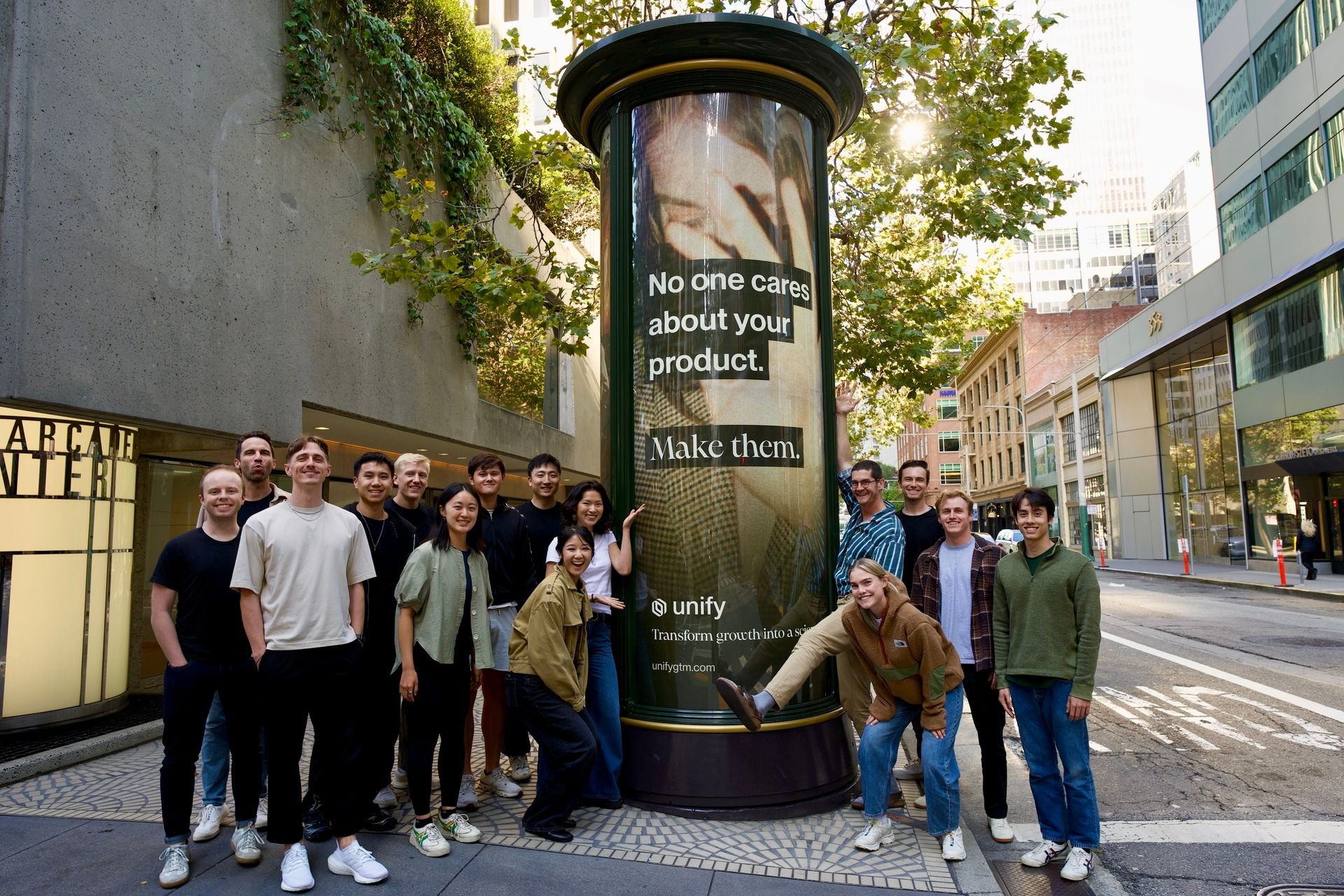
Every startup wonders when to test out-of-home. We put it off for years. Too expensive, too hard to measure, too easy to waste money.
By mid-2025, the timing finally clicked. We had just raised our Series B and sharpened our brand message. With Dreamforce and Inbound bringing thousands of our ICP to San Francisco, the window was perfect.
So in September 2025, we ran the experiment. $100K, six weeks, four formats, one city.
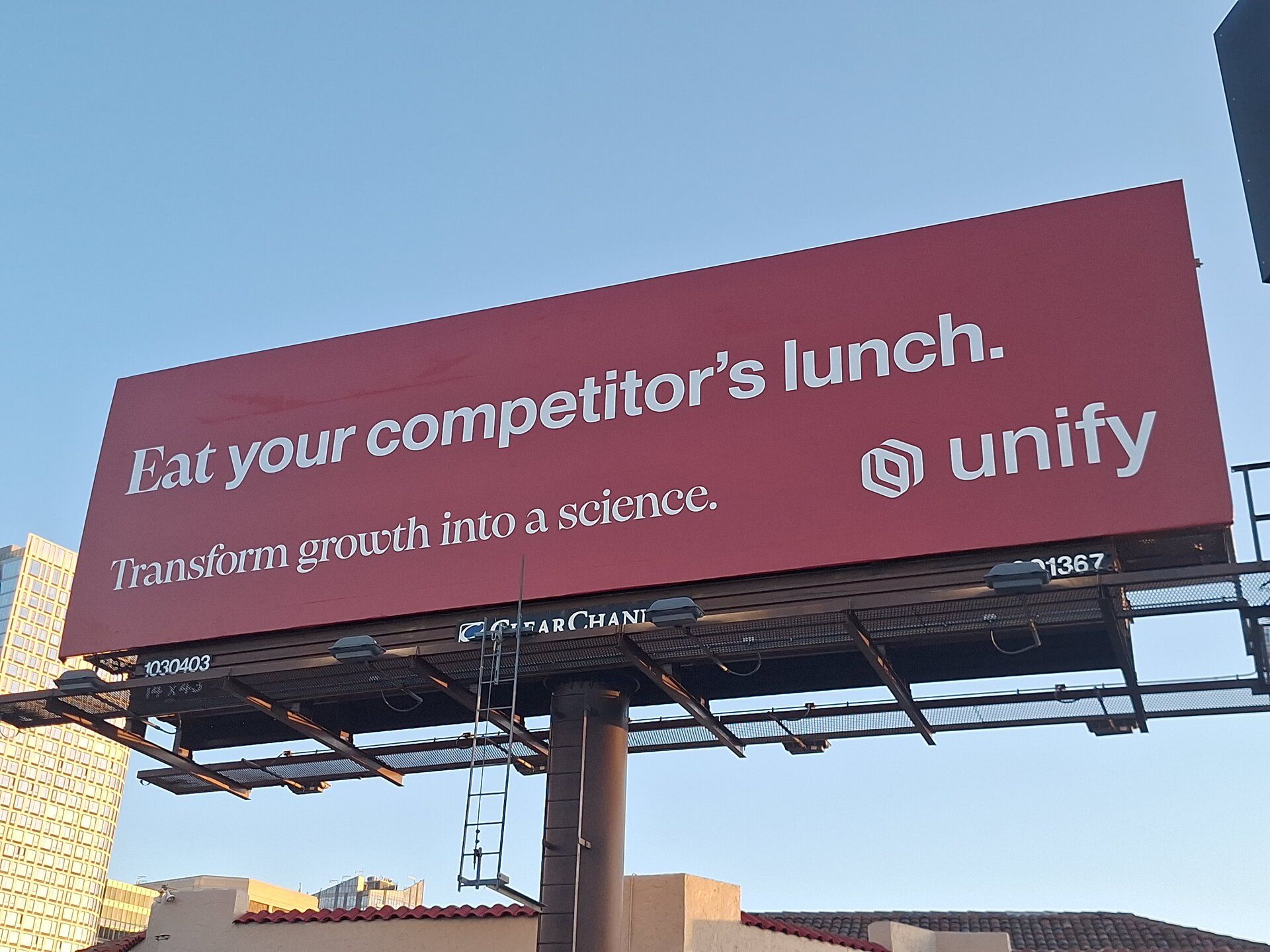
This is a behind-the-scenes breakdown of our first systematic OOH campaign: the planning, the placements, the creative choices, and the early results.
The Strategic Foundation
Why We Invested in OOH
Earlier in the year, we partnered with Ellis Hamburger from Meaning on brand messaging work that pushed us to sharpen Unify’s narrative. Out of that process came a clear mission statement: to help the best products win. That work felt like the right foundation before putting money into a brand-heavy channel like OOH.
We also walked away with slogans we believed in, like “No one cares about your product. Make them.” They spoke to what’s really happening in the AI age: the rise of high-agency people. The people winning aren’t waiting for customers to show up. They’re out there hunting for the right people whose pain they can uniquely solve.
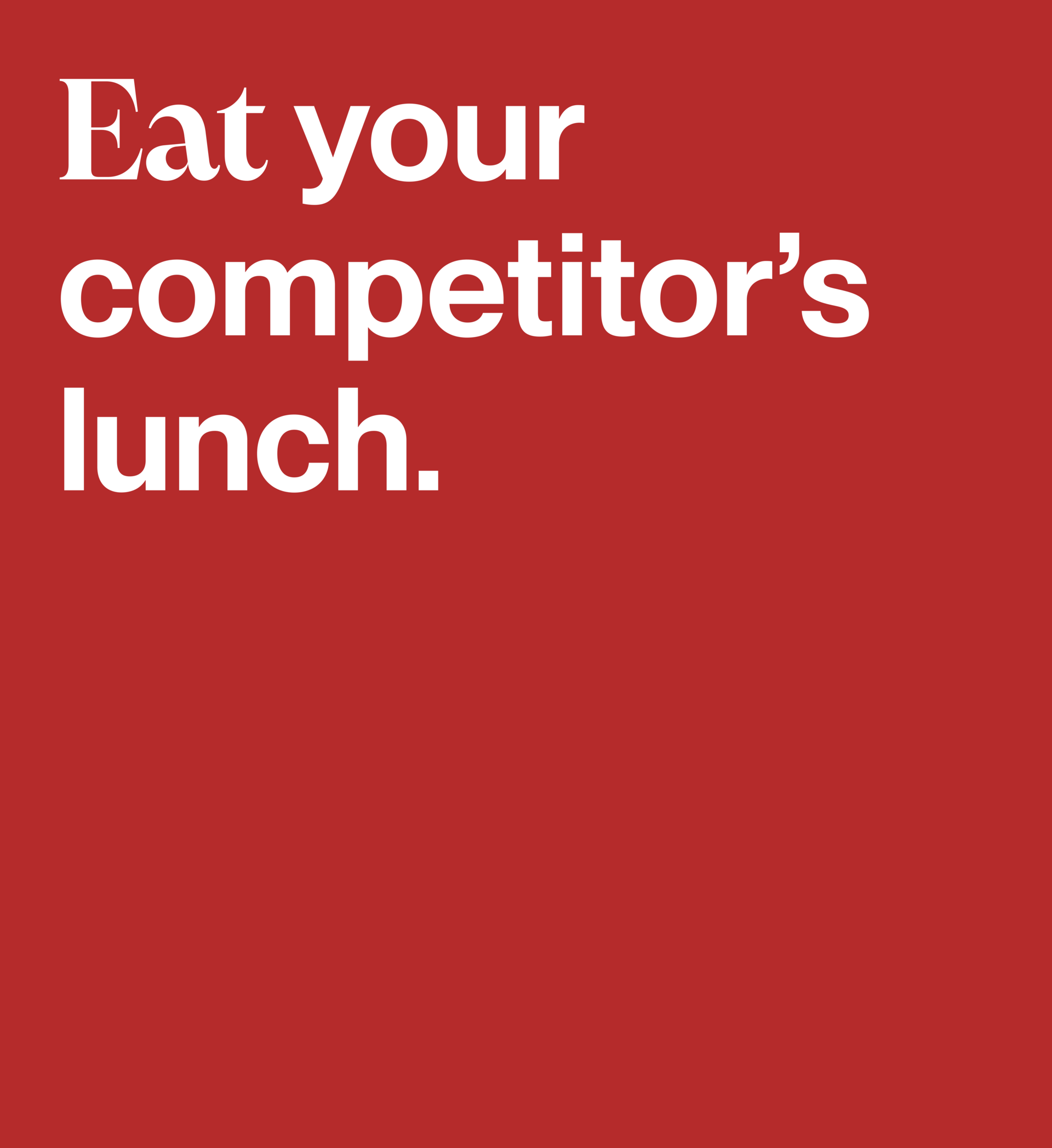 | 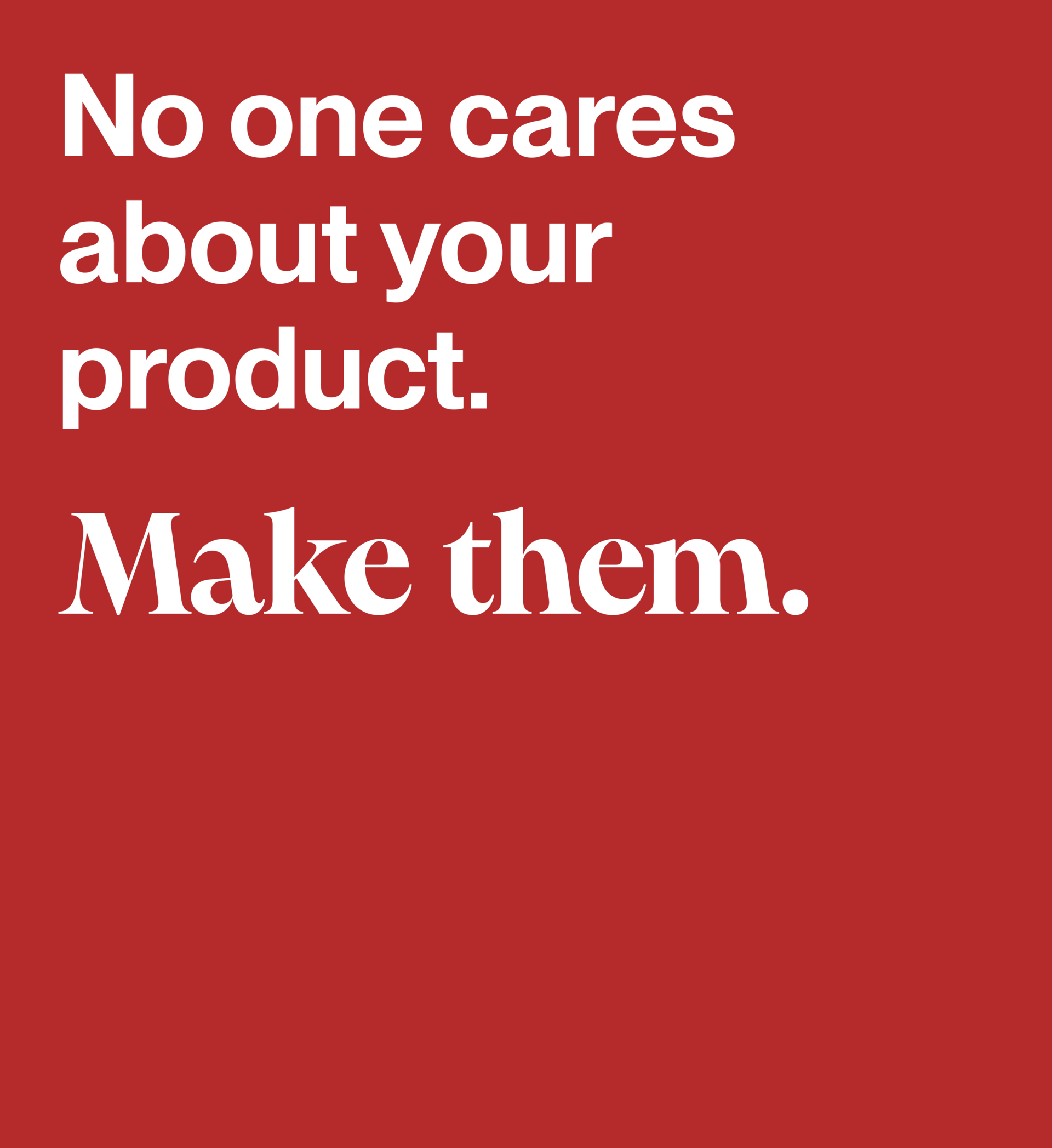 |
OOH was the best way to say that out loud. It’s direct, unavoidable, and hits both your ICP and the broader market in a way digital can't.
Why We Invested Now
We knew we wanted to launch in San Francisco because it's our biggest customer hub and home base. But timing was critical.
September and October are conference season in San Francisco, and the city floods with our ICP:
HubSpot Inbound (Early September)
Clay Sculpt (Mid-September)
Dreamforce (Mid-October)
That meant we weren’t just hitting locals, but thousands of visitors who fit our exact buyer persona. Stack all of that on top of each other, and you get the highest chance of real frequency and impact.
The Make-or-Break Decisions
3 Month Lead Time
OOH isn't a channel where you can just flip a switch. Premium placements get locked months in advance, and the best ones go quickly. We started talking to agencies in May for a September launch and still had to move fast to get the best units.
We even tried to scramble something together for our Series B announcement in July, but the available placements were bad and would have burned a ton of cash with almost no impact.
The lesson: if you want to hit a key event window, start at least 3 months out.
Budget: The $100K Minimum
Key insight: Frequency > everything. You need to hit people 3+ times for message recall.
When they're walking down the street
When they're driving in their car
When they're getting on the bus
One billboard = zero impact. You need critical mass.
For a market like San Francisco, $100K was the amount we felt we needed to see any results or signal. $50K would've been a sunk cost.
Agency vs Direct (Choose Agency)
We considered going direct to Clear Channel/Outfront and read articles like this one in Lenny's Newsletter to get up to speed, but no one on our team had bought OOH before. An agency could shortcut the learning curve, secure better placements, and negotiate better rates than we ever could.
We also asked around. Operators we trusted pointed us toward the agencies they had used.
Agency of choice: Quan Media Group (Brian Rappaport)
Secured $130K+ worth of placements for under $100K
Handled all vendor negotiations
Provided measurement/attribution
Also evaluated: onescreen.ai, Evolve OOH, PJX Media
The Execution Framework
Format Mix Strategy
Key insight: Mix high-dwell (pillars) with high-volume (billboards) placements.
We wanted a mixture of on-the-ground placements - which people walk by and get to spend more time looking at - as well as drive-by / up-above placements.
Our exact format mix was:
3 Billboards - High-frequency zones where we knew people would be leaving the Moscone Center from conferences, or where our ICP lives
1 Wallscape - The "hero shot" for social sharing
6 Pillars/week - Rotated weekly for 4 weeks in different locations each week (24 total)
10 Bus wraps - routes through SoMa/FiDi where our ICP commutes
Placement Science
Quan gave us a spreadsheet of placements. We didn't just take their word for it - we used Google Maps Street View to analyze the placement from all angles, looked at traffic patterns, and walked to some of the sites ourselves.
We then hand-picked each of the placements with Brian based on:
Proximity to ICP offices
Conference foot traffic
Cost per thousand impressions
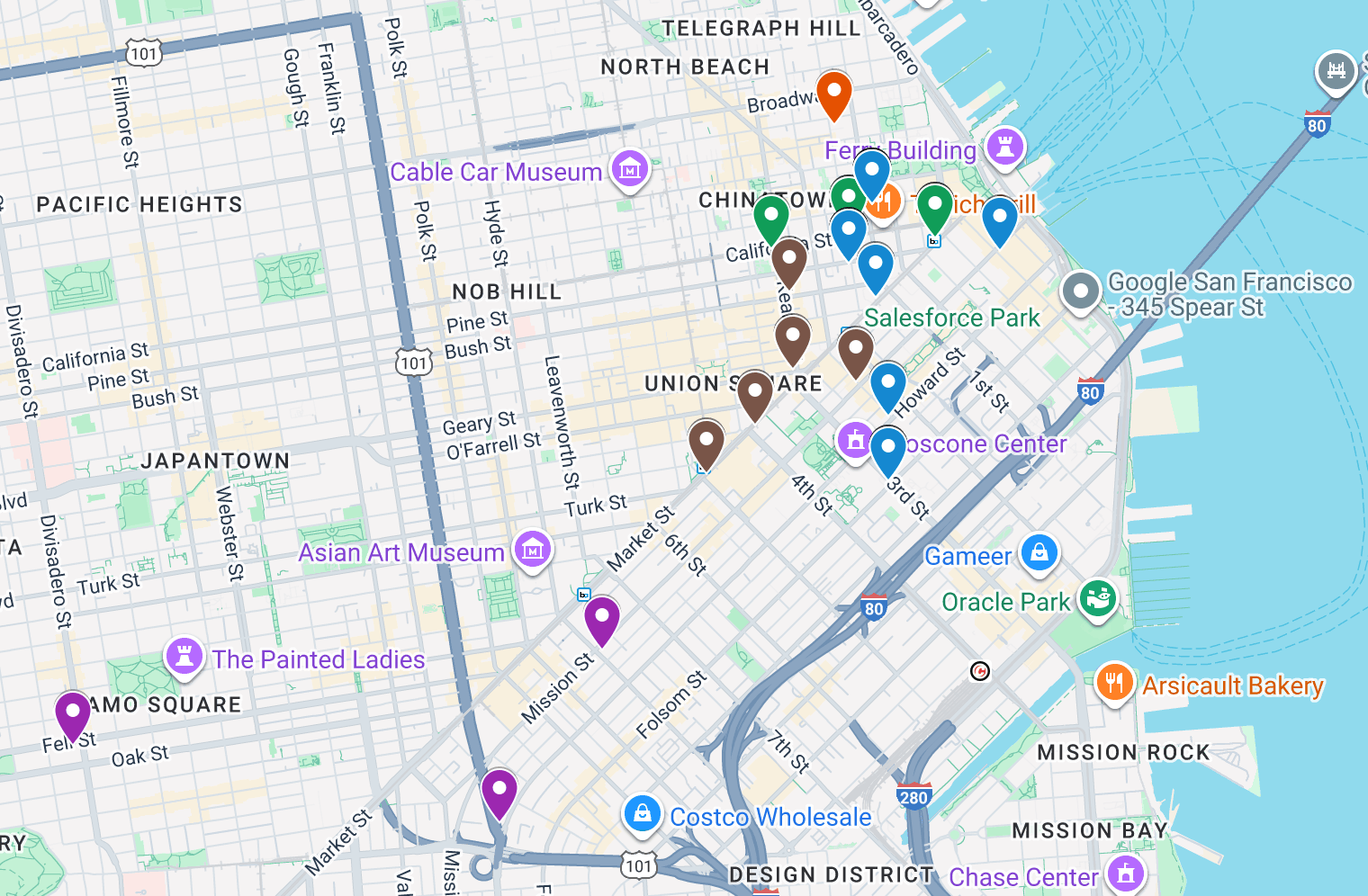
During Inbound, we put pillars right outside of Moscone Center. Other weeks, they were by our ICP's offices. Even put one in front of the Unify office and took photos with the whole team.
Pro tip: Be very strategic and picky about where you put your placements and the timing, it can make all of the difference!
Creative That Breaks the Rules
We did all of the creative and messaging ourselves. It came from Rhea (our growth lead), Hyewon (our desinger), and I whiteboarding for a few hours, throwing around ideas until the ones that stuck were the ones that made us laugh, pause, or argue.
For the visual element, we did what most people tell you not to do with OOH - we included stock photos of people in the background.
“Eat your competitor’s lunch” → a woman eating a burger
“No one cares about your product, make them” → a person hiding their face
The last thing we wanted was another boring B2B SaaS billboard.

So our format rules were:
Billboards/Buses: Bold red, minimal text - a two-second read
Pillars: More text, visual storytelling with images
Wallscape: All focus on the main slogan, as big and bold as possible
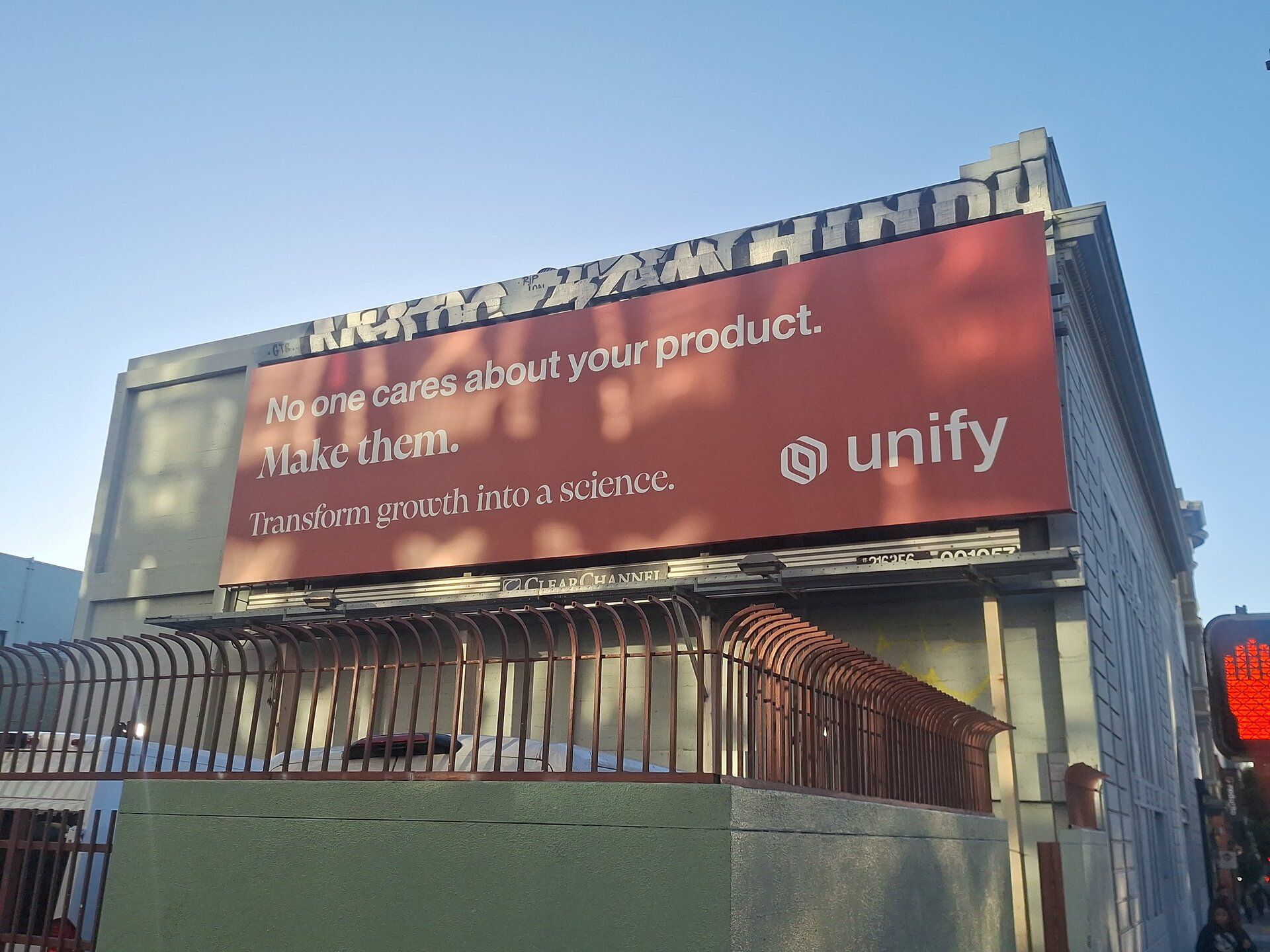
We had two core messages:
“Eat your competitor’s lunch” taps into the competitive nature of our customers. They want to win, and they need a tool like Unify to do it. This has been a longstanding internal phrase at Unify, and we decided to share it with the world.
“No one cares about your product, make them” challenges passive GTM. The people winning right now are those with high agency. They’re not waiting for customers to come to them - they’re out finding the people they can deliver the most value to.
Amplification and Measurement
The reality is that a ton of the impressions and value will come from social, not physical views. So we needed to be loud on social about the campaign (because, ironically, most people will not see your physical placements).
Our Amplification tactics:
Get "beauty shots" for all placements (Quan handled this for us)
Getting the team to post across LinkedIn/Twitter
Geo-targeted ads matching OOH creative
Team photos at each placement
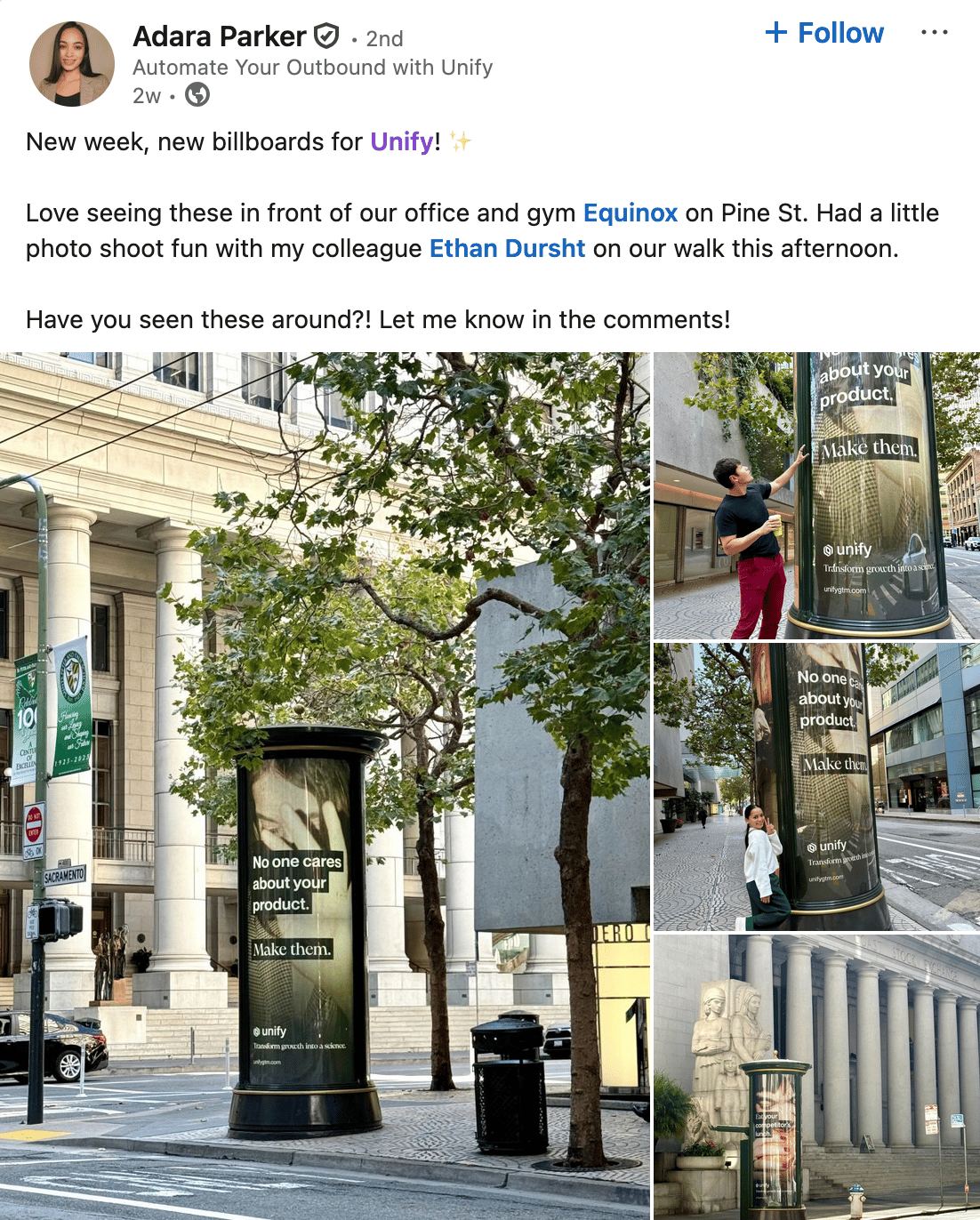
Measurement Framework
We tracked across four buckets:
Direct attribution (“saw your billboard”)
Website traffic lift
Mentions on sales calls
Meeting bookings by geo
At the time of writing this, it's still early to tell if the full impact is working. But we're seeing some web traffic coming from it and getting direct attribution from people mentioning they saw our billboards.
We’re also using Unify to capitalize on any website or social lift with targeted outbound, turning awareness into pipeline.
Tools: Agency-provided attribution (matches exposed vs control groups) for conversion lift. Attention for call insights. Unify for retargeting with outbound.
Results & Lessons
We approached this as a brand awareness experiment. The goal was to determine if there was strong ROI, look at the feedback, and build the case for continued channel investment.
The systematic approach means we can iterate based on results and expand geographically if the numbers prove out.
Early signals:
Direct website traffic from exposed areas
Prospects mentioning billboards on calls
Engagement with retargeting ads
Key learnings:
Results take time (especially without a self-serve motion yet)
Social amplification > physical impressions
Controversial messaging gets shared
$100K is table stakes for major markets
Your OOH Playbook
4-Week Timeline:
Week 1: Agency selection & budget lock
Week 2: Placement selection & holds
Weeks 2-3: Creative development
Week 4: Final approvals & production
⚠️ This 4-week sprint needs to start 2–3 months before launch if you want the best placements.
Budget breakdown (SF market):
$21K on 10 Buses
$26K on 6 Pillars
$21K on 1 Wallscape
$32K on 3 Billboards
Social Amplification Strategy